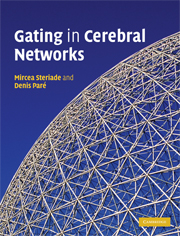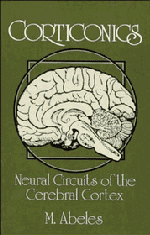Gating in Cerebral Networks
The correct functioning of the mammalian brain depends on the integrated activity of myriad neuronal and non-neuronal cells. Discrete areas serve discrete functions, and dispersed or distributed communities of cells serve others. Throughout, these networks of activity are under the control of neuromodulatory systems. One goal of current neuroscientific research is to elucidate the precise methods by which these systems operate, especially during normal conscious behaviours and processes. Mircea Steriade and Denis Paré describe the neuronal properties and networks that exist within and between the cortex and two important sub-cortical structures: the thalamus and amygdala. The authors explore the changes in these properties, covering topics including morphology, electrophysiology, architecture and gating; and comparing regions and systems in both normal and diseased states. Aimed at graduates and postdoctoral researchers in neuroscience.
- Highly illustrated with colour plates
- Comprehensive and detailed examples of brain functions
- Comparison of behaviours in normal and diseased states
Product details
September 2007Hardback
9780521851220
342 pages
257 × 195 × 22 mm
0.912kg
117 b/w illus. 8 colour illus.
Available
Table of Contents
- 1. Morphology and properties of neurons in the thalmus
- 2. Architecture and electrophysiology of neocortical cells
- 3. Amygdala
- 4. Rhinal and medial prefrontal cortices
- 5. Neuromodulation and state-dependent activities in forebrain neuronal circuits
- 6. Gating of signals in brain-disconnected slow-wave sleep
- 7. Neuronal processes and cognitive functions in brain-active states of waking and REM sleep
- 8. Comparison of state-dependent activity patterns in the thalamocortical, hippocampal and amygdalocortical systems
- 9. Neuronal substrates of some mental disorders.










